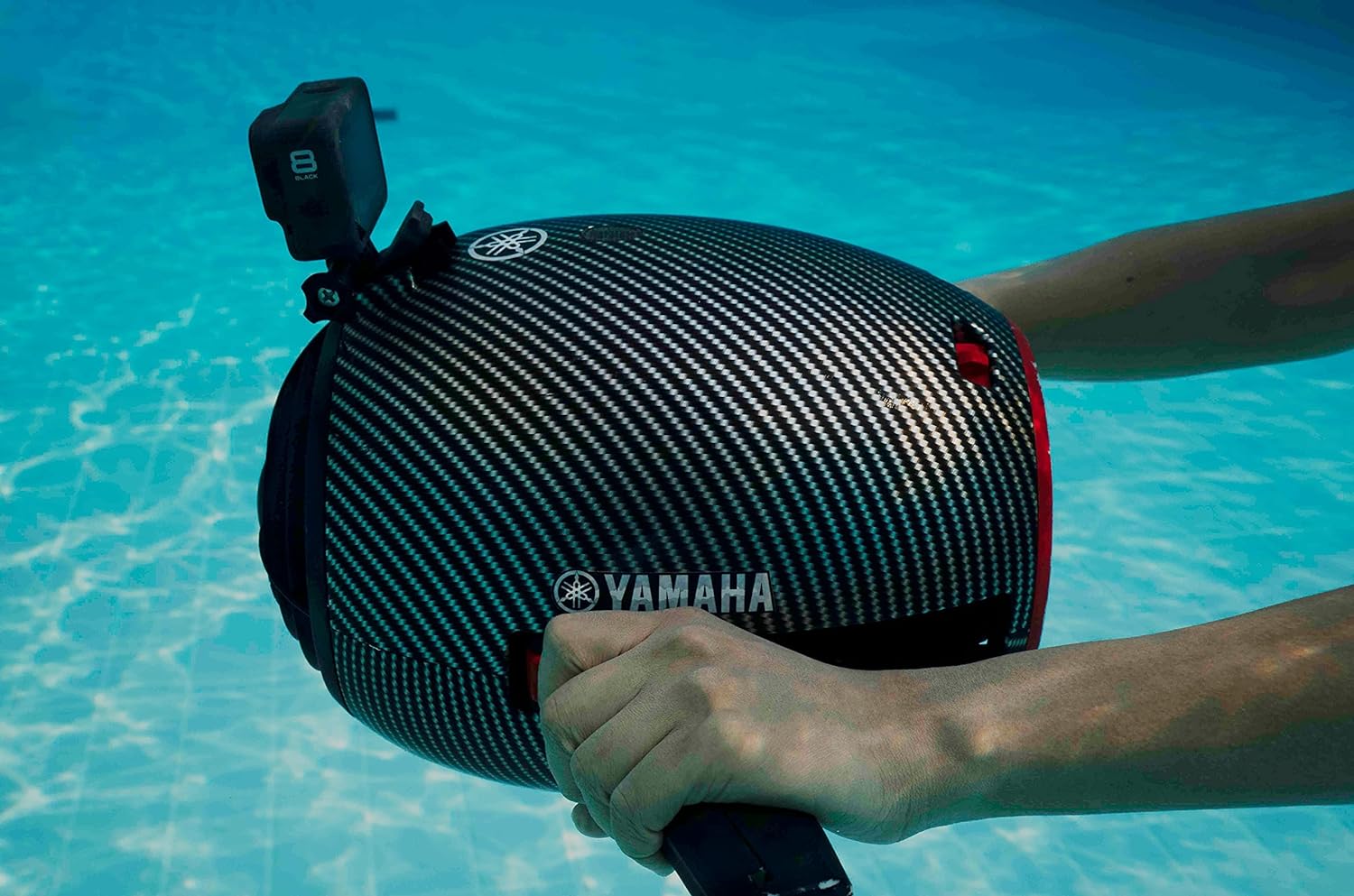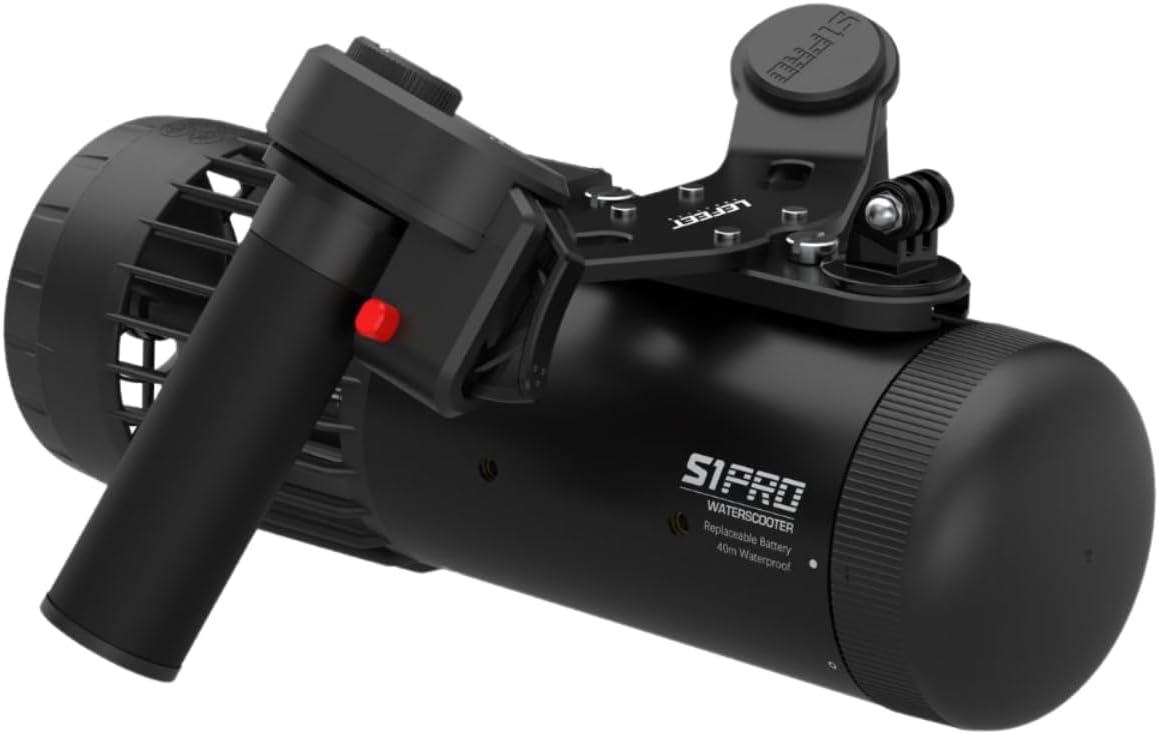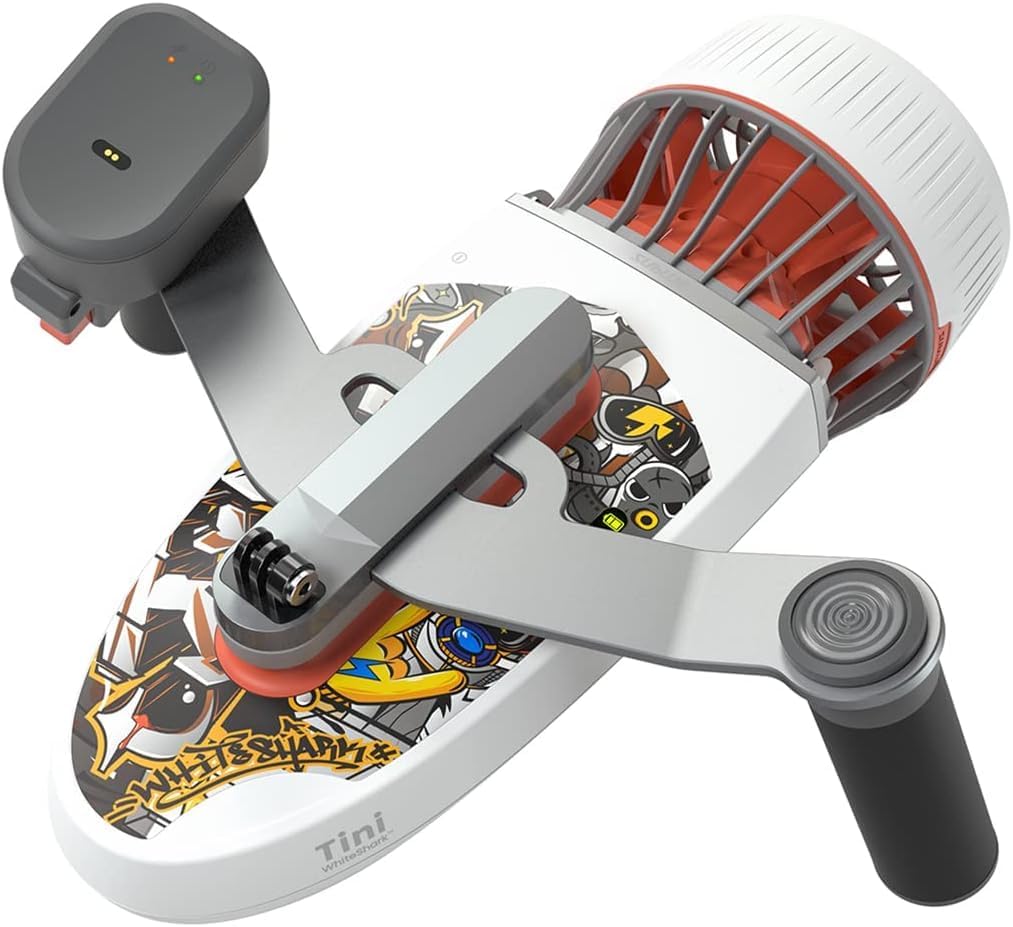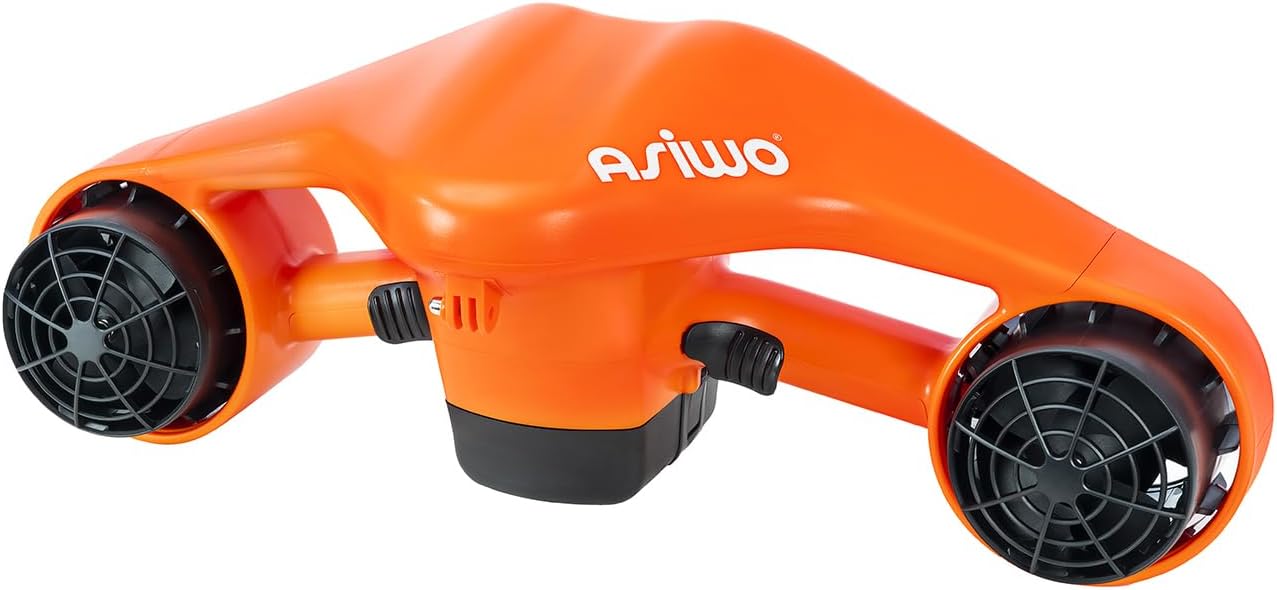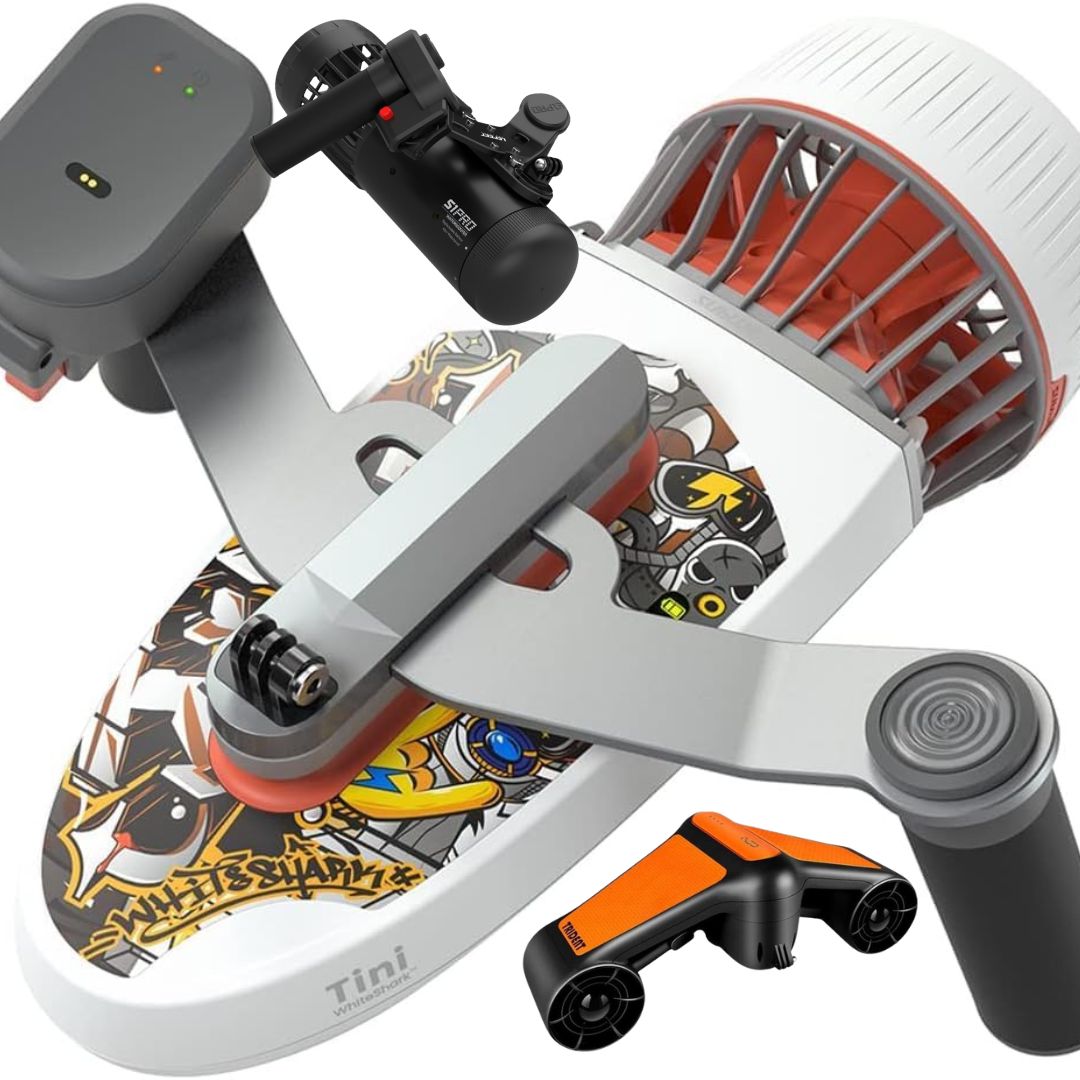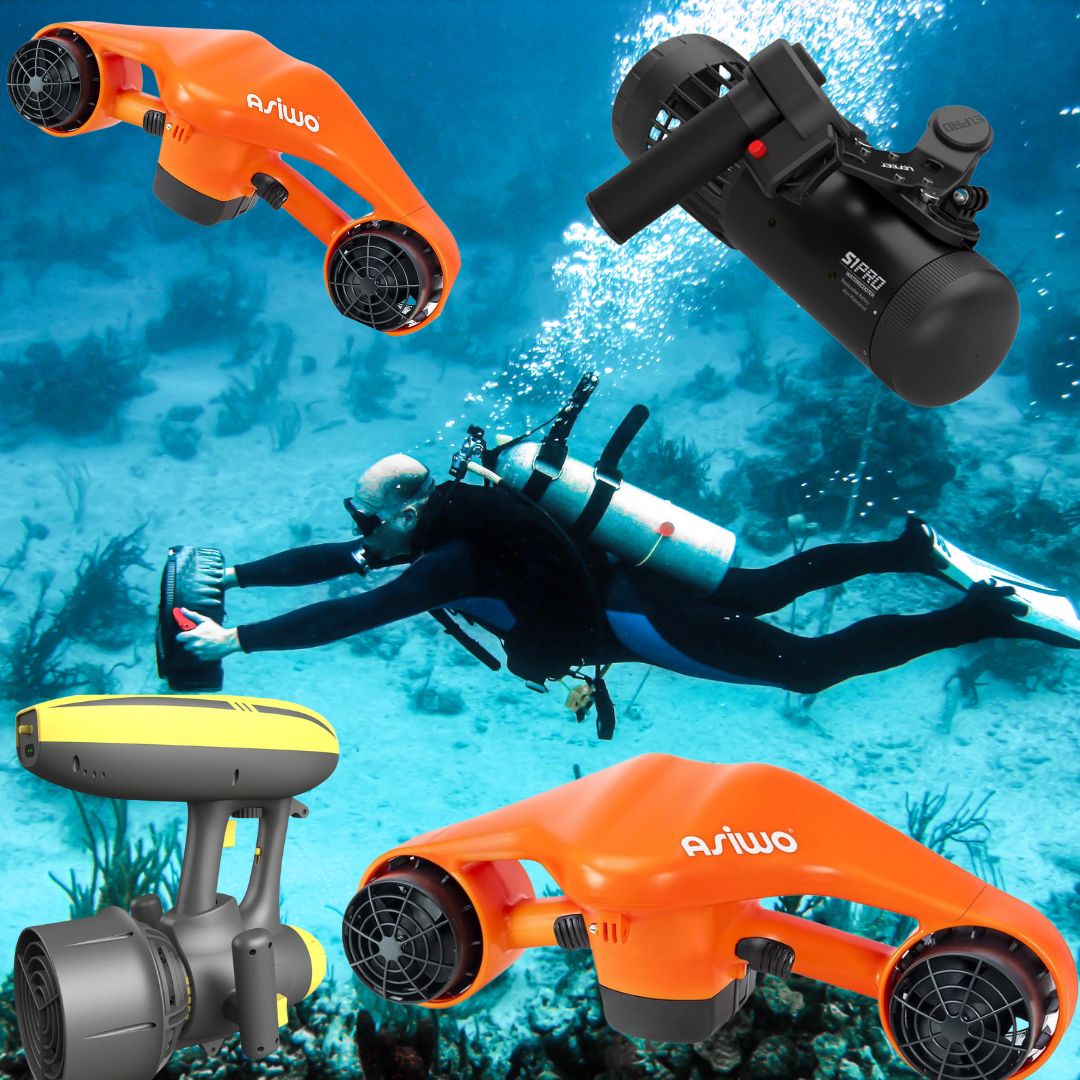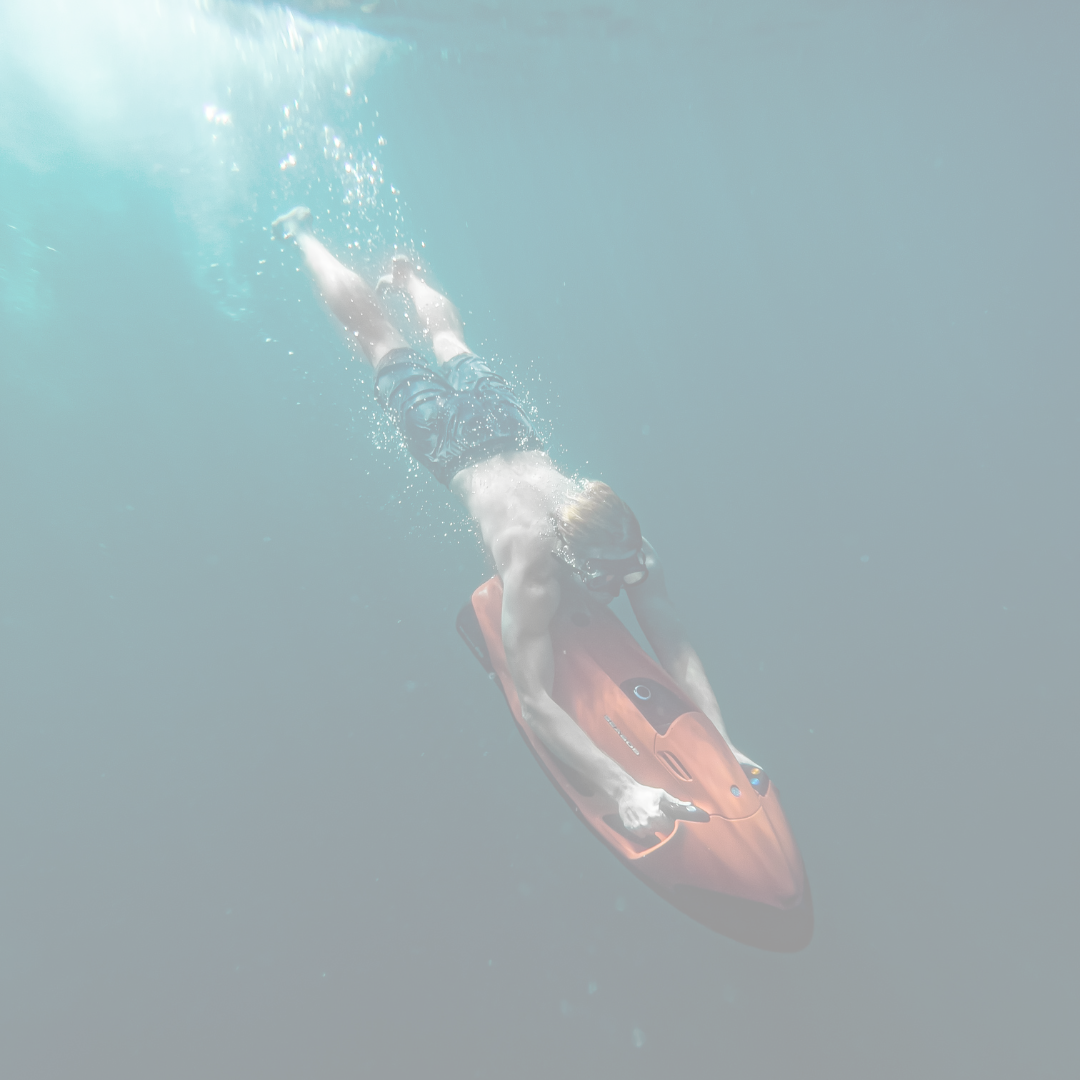Are Underwater Scooters Safe
Are Underwater Scooters Safe? Sure! As long as you don’t try using them to challenge dolphins to a race. Spoiler alert: You’ll lose. All jokes aside, I get it – trusting a motorized device while you’re underwater can feel a bit like trusting a flying squirrel with your parachute.
But honestly, you have nothing to fear when it comes to underwater scooter safety! These scooters are designed to keep your underwater adventures smooth, safe, and dolphin-free. But let’s get down to the big question: are underwater scooters safe?
Are Underwater Scooters Safe?
Okay, so let’s dive right in: Are underwater scooters safe? Yes, they are! But – and this is a big but – it depends on how you use them. Underwater scooters are engineered with safety features that cater to various needs, whether you’re a beginner or a seasoned scuba diver.
They come with automatic shut-off mechanisms, speed controls, and propeller guards to ensure you’re not jetting off uncontrollably into the abyss. Plus, they’re typically built with neutral buoyancy, so if it decides to take a break (read: runs out of battery), it won’t sink like a rock.
The real trick is knowing your environment, your limits, and, of course, how to properly handle the scooter. So, let’s break it down and get you up to speed with everything you need to know about staying safe underwater. You don’t have to worry about the scooter dragging you into the Mariana Trench.
1. Scooters and Kids: A Match Made in (Shallow) Heaven?
First off, if you’re thinking about handing an underwater scooter to your little adventurers, you’re probably wondering, are underwater scooters safe for kids? The idea of your child zooming off underwater can raise a few (okay, a lot of) alarms.
But rest easy – many models are made specifically for younger users, with lower speeds and simpler controls. These designs are perfect for introducing kids to underwater exploration without causing them to stress out.
What Makes a Scooter Kid-Friendly?
|
|
|
|
- Slower Speeds: Some scooters for kids have a top speed of around 2 mph, so your little one won’t be zooming off like an aquatic speed demon.
- Lightweight and Easy to Handle: Kid-friendly scooters are usually lighter, making them easy to carry and maneuver, even for smaller swimmers.
- Safety Features: Many scooters have features like automatic shut-off (the scooter stops when they let go), so there’s no risk of it running off without them.
For instance, the Yamaha Explorer Seascooter is a favorite among families. It’s lightweight, user-friendly, and designed with shallow-water adventures in mind. Just remember – supervision is non-negotiable. Even though scooters are designed with safety in mind, you’re still the lifeguard in this scenario.
2. Taking It to the Ocean: Is It Safe Out There?
When it comes to ocean use, people often wonder, are underwater scooters safe in open water? The ocean is a whole different ball game. While these scooters are built for fun, the unpredictability of the sea – currents, tides, and marine life – adds a layer of complexity.
What to Watch Out For
- Currents and Tides: In open water, a strong current can quickly take you further out than planned. It’s important to be aware of local tide charts and currents before heading out. Even the best underwater scooters can’t out-swim a strong riptide.
- Visibility: Murky water means you might not see obstacles or potential dangers ahead, so stick to areas where you have a clear line of sight.
- Marine Life: Scooters are generally safe around marine life, but always be respectful of your surroundings. You don’t want to be that person who spooked a school of fish or, worse, attracted unwanted attention from larger sea creatures.
Scooters like the Sublue Navbow are ideal for ocean use. With a top speed of 4.47 mph, a depth rating of up to 130 feet, and an automatic depth-lock feature, it’s built for safety and speed in the vast open waters.
But remember, the ocean is no place to test out your “extreme” scooter skills. Take it slow and stay aware of your environment.
3. Saltwater Survival: Will My Scooter Last?
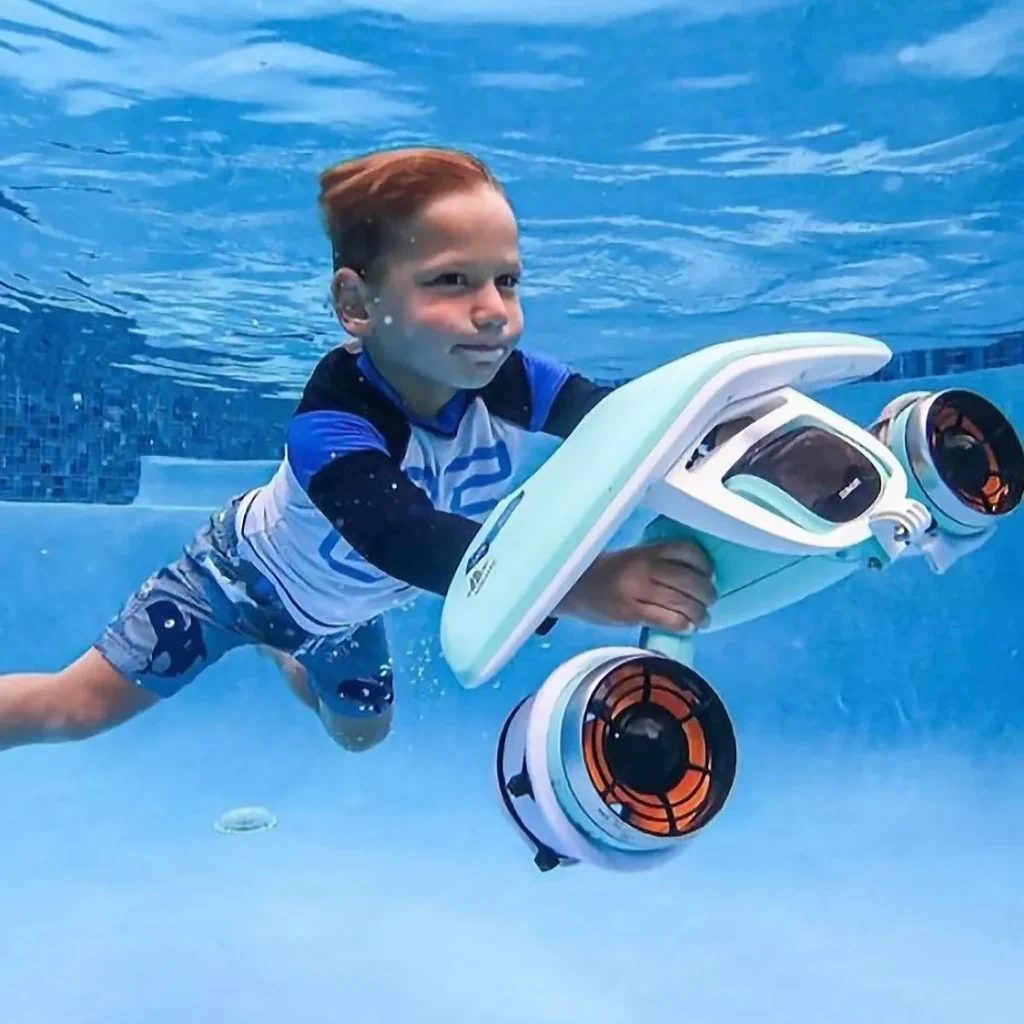
Now, one concern that pops up often is whether underwater scooters are safe to use in saltwater. The short answer? Yes. But saltwater isn’t exactly scooter-friendly – it’s corrosive. This means that over time, it can wear down your device unless it’s properly maintained.
How to Keep Your Scooter Saltwater-Ready
- Corrosion-Resistant Materials: Scooters made with stainless steel or corrosion-resistant plastics hold up better in saltwater environments. Always check the materials before making a purchase.
- Sealed Components: Look for scooters with tightly sealed battery compartments and motors to keep saltwater from getting inside and wreaking havoc.
The Geneinno S2 scooter is a great option if you’re primarily using your scooter in the ocean. Designed with high-grade plastic and corrosion-resistant materials, it can withstand saltwater exposure like a champ.
That said, after every ocean adventure, be sure to rinse your scooter with fresh water and dry it thoroughly to avoid any long-term damage. Think of it like giving your car a good wash after a road trip – you wouldn’t skip that, right?
4. Battery Life: Will I Run Out of Power?
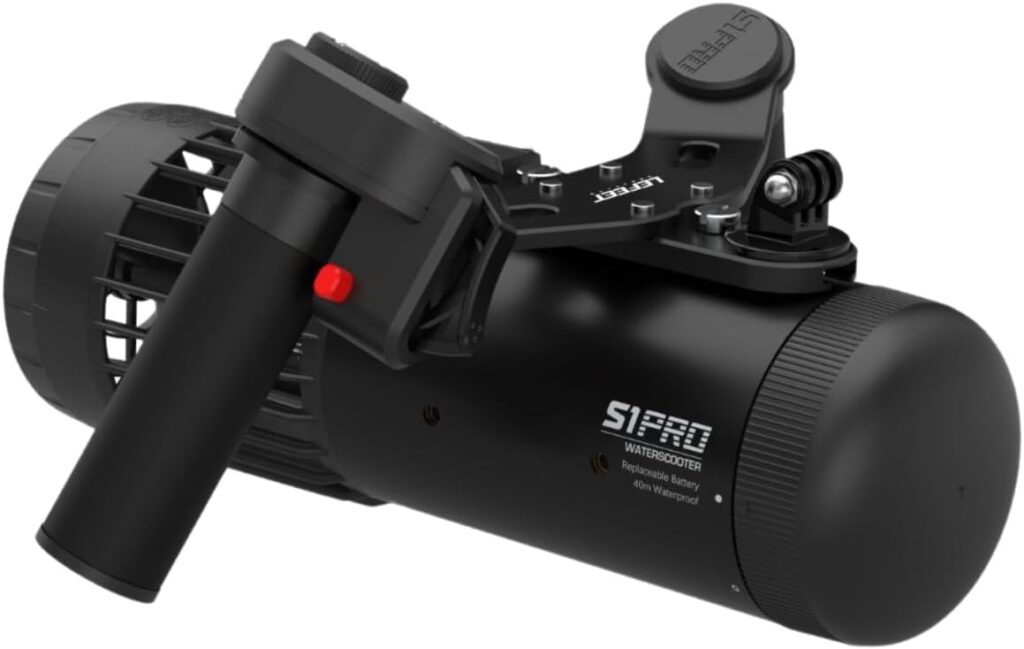
Another concern I hear often is, are underwater scooters safe when it comes to battery life? The idea of running out of juice mid-adventure can be nerve-wracking, especially if you’re far from the shore or in deeper water.
Managing Battery Life
- Battery Duration: Most scooters will give you anywhere from 30 minutes to 2 hours of fun, depending on the model and how hard you’re pushing it. Always check the specs and plan your trips accordingly. You don’t want to find yourself in the middle of a lake when the scooter decides it’s time for a nap.
- Battery Indicators: Many scooters come with battery level indicators, so you’ll know when it’s time to head back to shore. It’s like the gas gauge on your car – pay attention to it, or you’ll be paddling back.
- Quick Swap Options: Some scooters allow you to swap out batteries quickly, so you can extend your adventure without waiting hours for a recharge.
The S1-Pro Underwater stands out here, offering a 90-minute battery life and fast charging capabilities. Just make sure you bring along a spare battery if you’re planning on pushing your underwater adventure to the limit.
And hey, if you ever forget to check the battery gauge – consider it an unplanned swimming workout!
5. Legalities and Protected Areas: Can You Scooter Anywhere?
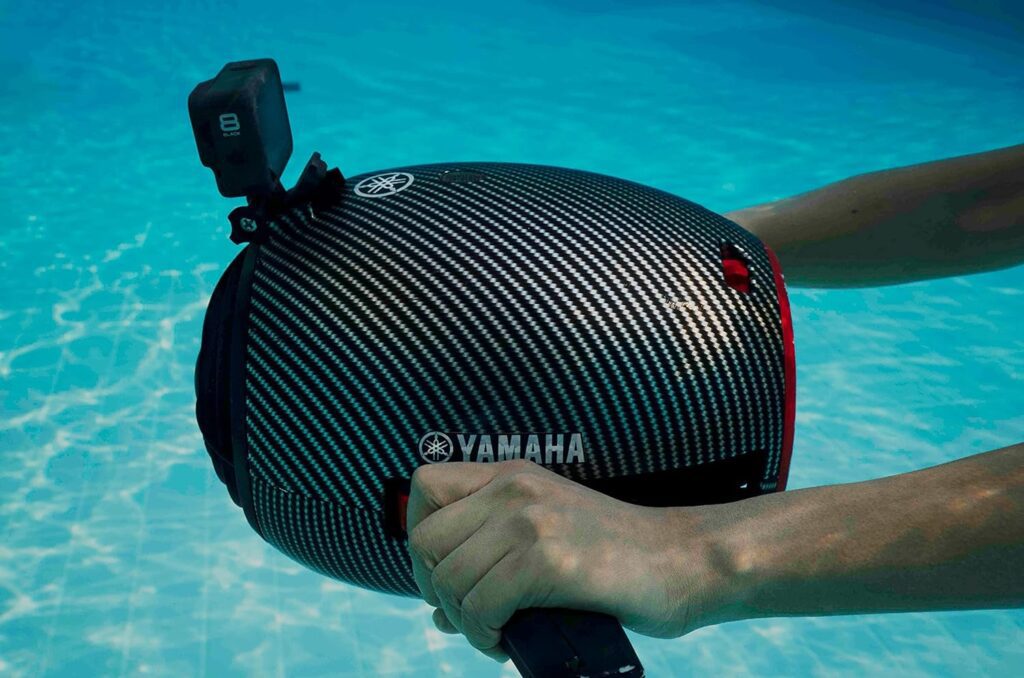
Are underwater scooters safe from a legal standpoint? The answer here depends on where you’re scootering. Not every beach, lake, or lagoon welcomes these motorized toys.
Many protected marine areas restrict or prohibit motorized equipment to protect the local wildlife and ecosystems. So, before you charge your scooter, make sure you’re familiar with local laws.
Things to Keep in Mind
- Marine Protected Areas: In certain zones, especially coral reefs and marine parks, motorized vehicles can harm fragile ecosystems. Research your location beforehand to avoid any hefty fines or angry looks from fellow snorkelers.
- Wildlife Regulations: Scooters can disturb fish, coral, and other underwater creatures. Respect local guidelines to keep marine life safe.
For example, Florida’s John Pennekamp Coral Reef State Park prohibits the use of motorized devices in certain areas to protect the delicate reef systems. It’s essential to be mindful of such restrictions and avoid using your scooter in protected zones.
6. What About Maintenance?
Here’s a question people often overlook: are underwater scooters safe long-term, and how do you keep them that way? Like any piece of equipment, scooters need regular maintenance to ensure they perform reliably and don’t fail you mid-adventure.
Maintenance Must-Dos
- Regular Cleaning: Rinse your scooter with fresh water after every use, especially after being in saltwater. This will prevent salt buildup and corrosion.
- Battery Care: Store your batteries in a cool, dry place and never leave them in extreme heat (like the trunk of your car in the summer). Heat can degrade battery life over time.
- Check Seals: Periodically inspect the seals on the battery compartment and other vulnerable parts. A compromised seal could let water in, leading to costly repairs or worst case – a dead scooter.
With regular upkeep, scooters like the Geneinno S2 will serve you well for many adventures to come. Consider maintenance part of your safety routine – it’s all about keeping your equipment reliable and ready for action.
The Bottom Line on Are Underwater Scooters Safe?
So, are underwater scooters safe? Yes, they absolutely are – when used correctly. Like any piece of tech, they come with risks, but the right precautions make those risks manageable.
Whether you’re diving with the dolphins, racing your kids in the pool, or simply cruising through clear waters, these gadgets are built with safety in mind. Remember to pick the right model for your needs, follow local laws, and, most importantly, have fun! Now, go out there and ride the waves – just don’t try to out-scooter a dolphin. It won’t end well.
